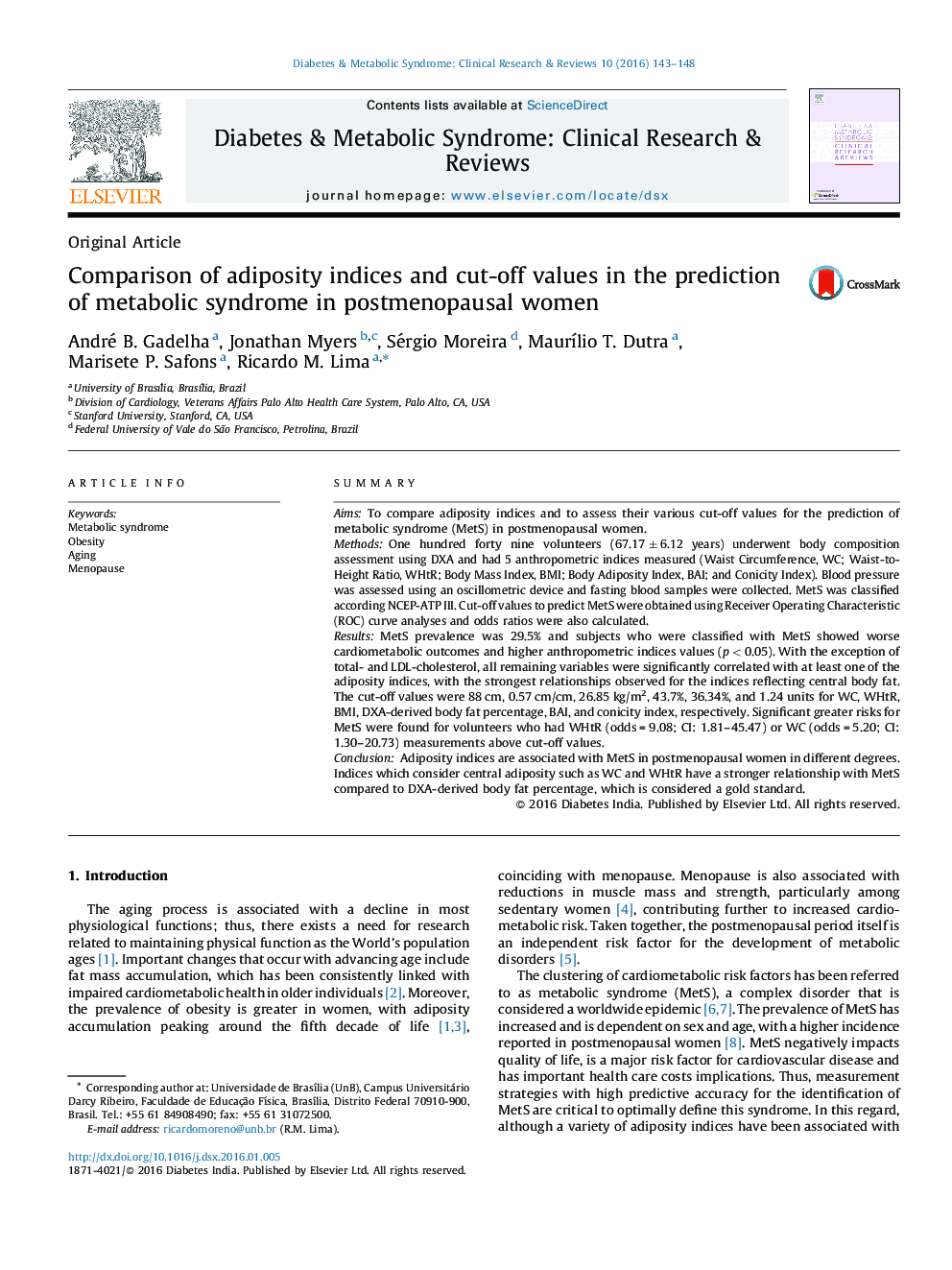| کد مقاله | کد نشریه | سال انتشار | مقاله انگلیسی | نسخه تمام متن |
|---|---|---|---|---|
| 2909778 | 1405355 | 2016 | 6 صفحه PDF | دانلود رایگان |
SummaryAimsTo compare adiposity indices and to assess their various cut-off values for the prediction of metabolic syndrome (MetS) in postmenopausal women.MethodsOne hundred forty nine volunteers (67.17 ± 6.12 years) underwent body composition assessment using DXA and had 5 anthropometric indices measured (Waist Circumference, WC; Waist-to-Height Ratio, WHtR; Body Mass Index, BMI; Body Adiposity Index, BAI; and Conicity Index). Blood pressure was assessed using an oscillometric device and fasting blood samples were collected. MetS was classified according NCEP-ATP III. Cut-off values to predict MetS were obtained using Receiver Operating Characteristic (ROC) curve analyses and odds ratios were also calculated.ResultsMetS prevalence was 29.5% and subjects who were classified with MetS showed worse cardiometabolic outcomes and higher anthropometric indices values (p < 0.05). With the exception of total- and LDL-cholesterol, all remaining variables were significantly correlated with at least one of the adiposity indices, with the strongest relationships observed for the indices reflecting central body fat. The cut-off values were 88 cm, 0.57 cm/cm, 26.85 kg/m2, 43.7%, 36.34%, and 1.24 units for WC, WHtR, BMI, DXA-derived body fat percentage, BAI, and conicity index, respectively. Significant greater risks for MetS were found for volunteers who had WHtR (odds = 9.08; CI: 1.81–45.47) or WC (odds = 5.20; CI: 1.30–20.73) measurements above cut-off values.ConclusionAdiposity indices are associated with MetS in postmenopausal women in different degrees. Indices which consider central adiposity such as WC and WHtR have a stronger relationship with MetS compared to DXA-derived body fat percentage, which is considered a gold standard.
Journal: Diabetes & Metabolic Syndrome: Clinical Research & Reviews - Volume 10, Issue 3, July–September 2016, Pages 143–148
